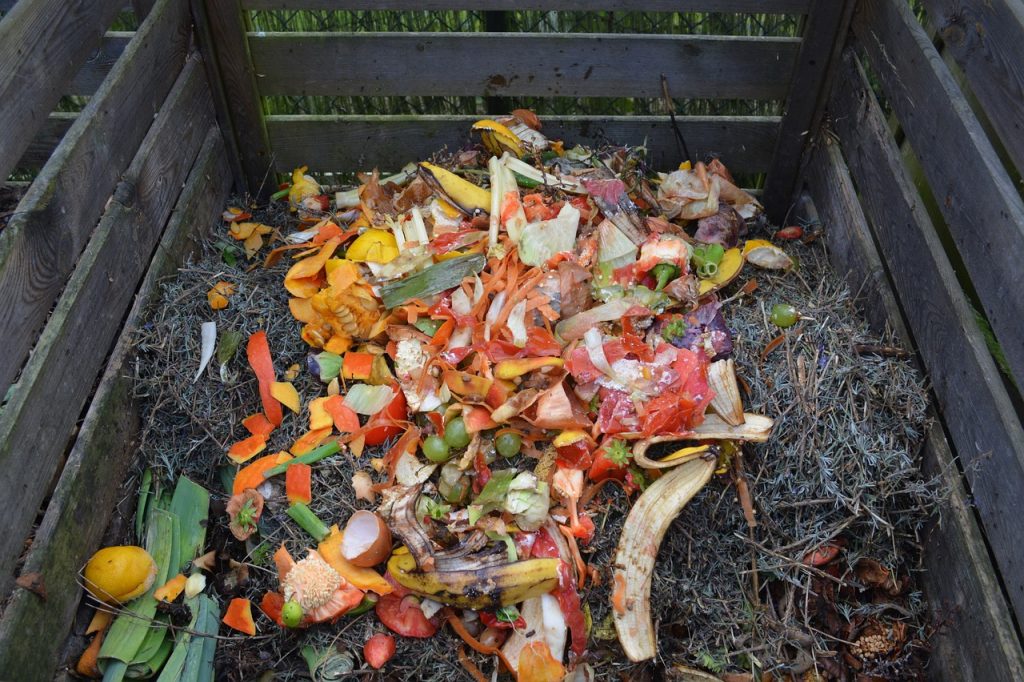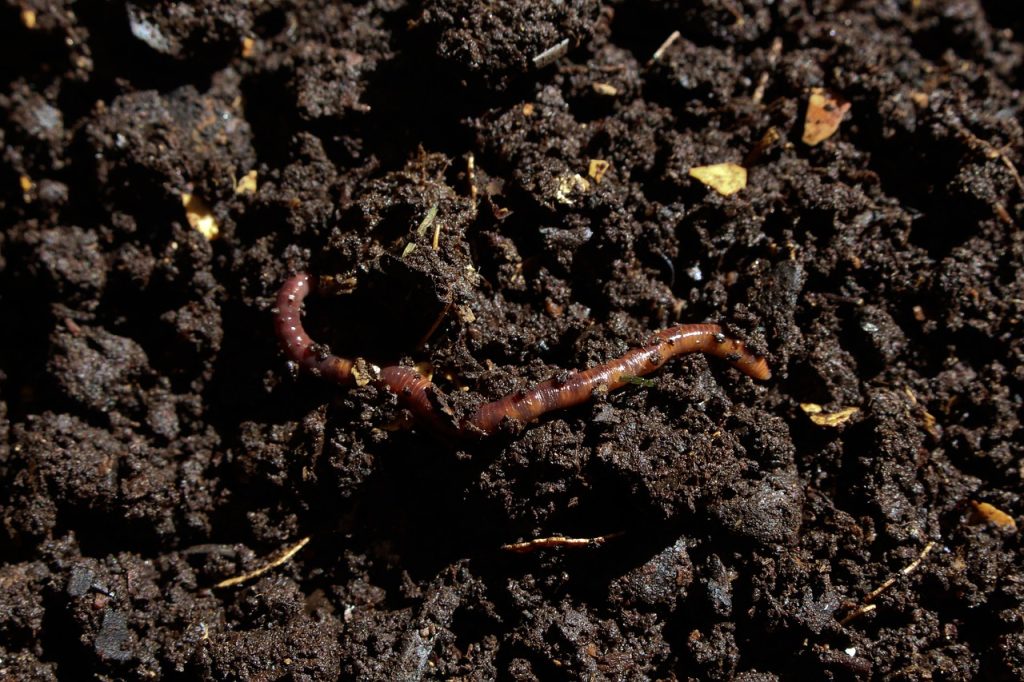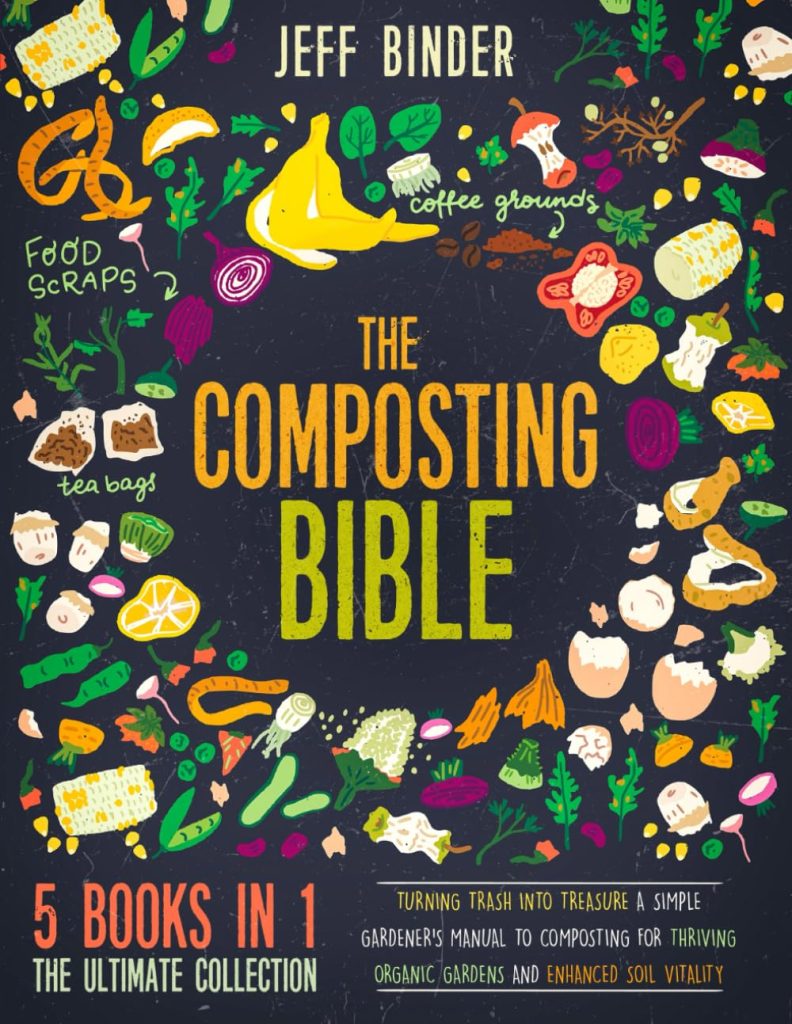In this guide we will discuss how to put your food scraps to good use and some fun and creative ways to get your kids involved. I will also provide information on how you can create compost no matter where you live with urban kitchen composting. Engaging children in composting not only teaches them about sustainability and environmental stewardship but also fosters a deeper connection with nature.
This post contains affiliate links, which means Barefoot Bliss and Books make a small commission at no extra cost to you. See the full disclosure here.

Explain the Why of Composting to Kids
By explaining why composting is important and how it can help the environment we can empower our children with ways to make a difference. Young kids can think of composting like a way for recycling food waste to feed our plants while older kids can research and understand the science behind it, covering topics such as biology, life cycles, recycling, conservation.
Let kids know that when we throw food scraps, garden cuttings, and other organic materials into the bin, they end up in landfill where they don’t get enough air and sunlight to break down properly. But when we compost, we create a special environment where these materials can decompose naturally with the help of tiny organisms like bacteria and worms. As they break down, they turn into nutrient-rich soil that we can use to help plants grow big and strong. So, by composting, we’re not only keeping waste out of landfills but also creating something super useful for our gardens! It’s like giving our food scraps a second chance to do something amazing.
Getting Started: Setting Up Your Composting Station
Most kids will benefit from being hands on in this process and perhaps even having their own compost container if possible. So let’s set up your composting station. Here’s what you’ll need:
- Container: You can choose a sturdy container with a lid to contain the compost or you can simply have a compost heap or you can repurpose a large plastic tub. I have a range of compost containers from plastic bins to mesh cages and they all do the job.
- Location: Place the compost bin in a convenient spot in your backyard or on your balcony or inb your kitchen (check out urban kitchen composting further down the page). Ensure it receives adequate sunlight and is easily accessible for regular additions.
- Brown and Green Materials: Explain to your kids that composting requires a balance of brown (carbon-rich) and green (nitrogen-rich) materials. Brown materials include dry leaves, shredded paper, and cardboard, while green materials include fruit and vegetable scraps, coffee grounds, and grass clippings.
The Composting Process: Turning Waste into Gold
Now that your composting station is set up, it’s time to start composting! Follow these steps:
- Layering: Teach your kids the importance of layering brown and green materials in the compost bin. Start with a layer of brown materials, followed by a layer of green materials, and continue alternating.
- Turning: Turning the compost aerates it and helps speed up the decomposition process. Encourage your kids to use a fork or shovel to gently turn the compost every week.
- Watering: Compost should be kept moist but not soggy. Show your kids how to water the compost pile using a watering can or hose.

Fun Composting Activities for Kids
Make composting a hands-on and enjoyable experience for your kids with these fun activities:
- Worm Composting: Introduce your kids to the fascinating world of worms by setting up a worm composting bin, also known as vermicomposting. Let them observe how worms break down organic matter and turn it into nutrient-rich compost.
- Compost Bingo: Create a compost bingo game to teach kids about different items that can be composted. Make bingo cards with pictures of compostable items like banana peels, eggshells, and grass clippings, and have them mark off each item as they add it to the compost bin.
- Science Experiment: Once you have some compost made set up some seeds to grow and feed one with your homemade compost and the other without and journal about the differences in the plants growth.

Harvesting and Using Compost
After a few months of composting, your compost will be ready to use! Here’s how to harvest and use compost with your kids:
- Harvesting: Once the compost is dark, crumbly, and earthy-smelling, it’s ready to use. Show your kids how to sift through the compost to remove any large chunks or undecomposed materials.
- Using Compost: Use the finished compost to enrich your garden soil, potting mix for plants, or as mulch around trees and shrubs. Let your kids take pride in knowing that they’ve helped create nutrient-rich soil for growing healthy plants.
Composting without a Garden
Urban kitchen composting is a fantastic way to turn food scraps into nutrient-rich soil, even if you don’t have a backyard! In the hustle and bustle of city life, it’s easy to overlook the potential of kitchen waste. But with urban kitchen composting, all you need is a small space, like a balcony or countertop, and a compact compost bin or worm bin. Simply collect your fruit and veggie scraps, coffee grounds, and eggshells in a container, and let nature do the rest. With a little care and attention, these scraps transform into black gold, perfect for nourishing houseplants, community gardens, or even shared green spaces in the city. Urban kitchen composting not only reduces waste but also brings a touch of green living to urban dwellers, connecting them to the natural cycles of growth and renewal right at home.
Further Reseach on Composting
Check out The Compost Research and Education Foundation and support International Compost Awareness Week (ICAW) 2024 May 5 – 11, 2024
Grab a book on the subject such as The Composting Bible: Turning Trash into Treasure
Watch a video on composting by an expert such as Charles Dowding
As you can see from this guide composting with kids is not only educational but also a fun and rewarding experience for the whole family. By involving your children in the composting process, you’re instilling important lessons about sustainability, responsibility, and the natural world. So, grab your pitchforks and get ready for some green gardening adventures with your little eco-warriors!


Good information here. Those worm containers with clear sides and layers of light and dark materials are interesting to see how worms mix up the layers.